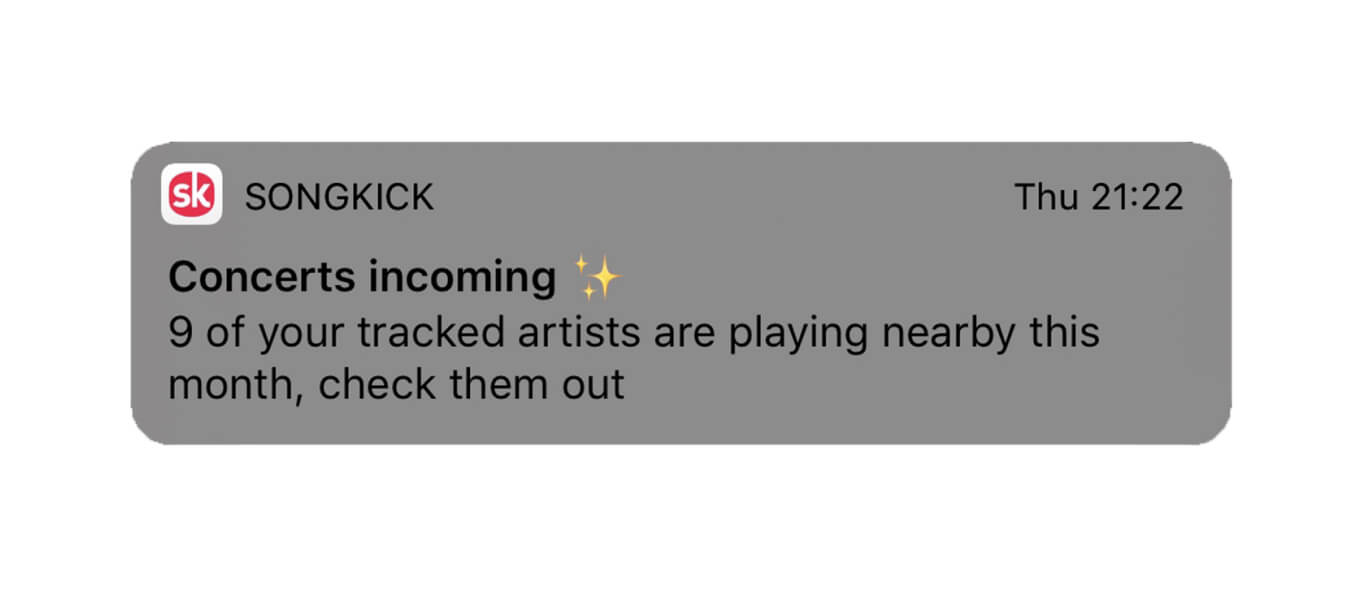The Ultimate Guide to Push Notifications: Tools & Case Studies

Table of Content:
According to a recent study published by the New York Post, Americans check their phones every 12 minutes, which equates to about 80 times a day. Taking this data into account, it’s safe to say that mobile push notification marketing has become relevant as never before. By constantly checking their phones, people lose the fear of missing out on something important, interesting and alluring. Why not use this opportunity to send a perfectly-targeted and convenient push notification? Your customers will hardly miss those.
According to a recent survey by Localytics, over half of people enable push notifications when they download the app. On average, mobile push notifications show 3-8% open rate, depending on the type of content. In other words, mobile push notifications can greatly increase the engagement and conversion of your audience. But, as with any marketing tool, you can only reap the benefits if you know all the pitfalls of this technology.
Know Your Audience
When it comes to push notifications, It’s vital to understand your target audience and personalize your push messages to get them read and clicked. Sending inappropriate notifications to the wrong audience hardly brings any benefit to your business, and it may cause harm. So how well would you say you know your customers? Before you start planning your mobile push notification strategy, get answers to these questions first:
- What’s their age? While it’s not very important whether they are 23 or 25, knowing which decade of life they are in or their generation can totally make a difference.
- What are their interests? What other services and products do they use? How do they spend their time? What do they like to do? Knowing the answers to these questions might help you in brainstorming your next mobile push notification campaign.
- Where do they live? While it’s important to know where in the world your customers live, it’s also important to take into account their timezone while sending out push notification campaigns. Nobody wants to receive a message while having a good night’s sleep. Wrong timing can easily spoil the effect of mobile push notifications.
- What language do they speak? While it might seem obvious to associate your customer’s country of origin with the language they speak, it would be totally ignorant to assume that your target audience is speaking the dominant language of their current physical location.
- What’s the average amount they spend on your products or services? Having a clear understanding of your customers’ spending power is crucial. You may recommend something more expensive if you know that your customer might be willing to spend more or you can offer a discount if you know that it can help boost your sales.
“Just don’t forget that while every customer loves discounts, not everybody necessarily needs additional discount-backed motivation to make a purchase. Lowering prices on your products or services isn’t always a win deal as it may dilute your brand image and negatively affect your business.”
— Adam Simon, Head of Marketing at LegitWritingServices.
If you have a good grasp on your target audience and its behavior, push notifications can become a great additional source of sales and a good customer re-engagement tool. However, there’s one more thing that you should keep in mind — sending frequency.
Determine Optimal Sending Frequency
When it comes to push notifications, it is very important to find a frequency sweet spot. While push notifications are truly a great tool that can help you engage with your audience, people can easily get annoyed if you overuse it. Too many push notifications can make your users mute them, or in some cases, delete your app altogether.
While there’s practically no limit on using truly helpful, transactional push notifications (when the order ships, taxi arrives, etc.), behavior-based, promotional push notifications are way less preferable and may result in users opting out. According to the same survey by Localytics, it is relatively safe to send 2-5 push notifications per week. However, things are not so black and white here, just because general statistics cannot always apply to every single business.
Even though it is believed that sending 2-5 push messages might be generally safe, it’s better to start with one promotional push per week (for notifications triggered by users’ behavior), and start adding more based on results you receive.
It’s also a good practice to let your users know and choose what type of push notifications they will be receiving. You don’t want to come across as a spammer, so give them options to receive specific types of notifications instead of sending them without permission.
When it comes to choosing a mobile push notification service, there are quite a few good options available. Here’s our list of top five companies to consider for your push notification campaigns:
- OneSignal can help you set up, automate and customize push notifications for all occasions, whether it is a promo notification, a customized reminder to complete the action, an event-triggered notification or anything else. Unsure of what type of push notifications would work for your business? That’s not a problem. OneSignal can also assist you in choosing the most effective push notifications that align with your needs.
- Airship is another push service that can help you automate, deliver highly relevant push campaigns and analyze results. With the help of Airship’s predictive AI, you can determine optimal send time for your campaigns, as well as safely send them with its predictive churn tool.
- Leanplum helps its customers to send engaging, personalized and highly effective push notifications. Leanplum is trusted by TED, Tinder, IMVU and many other well-known companies.
- Localytics. Apart from providing its customers with above and beyond push customization tools, Localytics provides extensive analytics on push notification campaigns, helping you achieve better results.
- PushWoosh is another all-in-one push-notification and cross-channel marketing service that you might want to use to start sending customized push notifications to your users.
Interested already? We have chosen ten successful mobile push notifications cases. Check them out to see how they can help you promote your business, build customer loyalty and boost your user engagement.
SongKick
American ticket sales and concert discovery company, SongKick, uses their users’ geolocation data and music preferences to send customized and strictly segmented push notifications to inform users about the upcoming shows of their favorite artists. In this case, correct segmentation of audience based on favorite artists and user’s location results in higher conversion rates because of relevant personalization.

Airbnb
This type of re-engaging, conversion-driving mobile push notifications help Airbnb recover lost bookings and convert potential guests into customers by persuading them to return to the app and book their stay as soon as possible.
This strategy is quite similar to the classic abandoned cart e-mails, wherein a business sends out a follow-up e-mail to a client who has added some products into their cart but left the site without completing the purchase. But while an e-mail might lie unopened or might get lost in the spam folder, push notifications are more likely to be seen.

Dunkin’
Not only is this a good example of creative marketing, but also a great case of an effective, situationally-relevant push notification in use. Who wants to get outside into blizzard and drive, or worse, walk a few miles through a snowstorm to get a daily cup of coffee? That’s right, no one. But we all love coffee, right? It’s hard to pick a better timing to pitch K-Cup pods and packaged coffee to the customers, don’t you agree?

Netflix
Netflix surely knows how to re-engage users. Not only does the company use push notifications to recommend similar shows users might like, it also lets users know when their favorite shows come out and keeps its users engaged by sending customized notifications.

Foursquare
Foursquare analyses your searches and assesses your whereabouts to send relevant location-based push notifications. The company sends pushes about the interesting places, bars & restaurants to visit nearby and also offers lists of landmarks to consider on your future trips. If you’re currently in California and have been recently searching for places in New York, you will surely get a push notification like this one.

Amazon
Another great example of how mobile push messages help in dealing with abandoned carts. Using abandoned cart follow-up messages isn’t a new marketing tactic at all. A user who added some items to their cart and then left without buying them is sent a notification with a link to complete their purchase. This is how you can boost conversion rate. However, mobile push notifications take this user re-engagement tactic to the next level.
Push messages are easier to read, users actually see them, and they are more likely to click on them. If you’re not using this strategy yet, you should start doing so immediately. Implement abandoned cart reminders like this one or offer a discount and see what works best for you.

Starbucks
This one from Starbucks is a good example of another type of push notifications — transactional ones. With transactional notifications, you can let users know when their order ships, package is delivered, bill is due, or, in the case of Starbucks, coffee is made. Barista has a laptop where they manage orders and send out notifications when your order is ready. It's as simple as that.

Burger King
Push notifications might also be a great way to promote special offers and discounts. And unlike other marketing tools like follow-up emails or SMS, they grab users’ attention immediately and have a much better chance to be clicked. Burger King frequently experiments with this kind of re-engagement promos to keep the interest in the brand alive and make old clients return to the app.

JetBlue
JetBlue, like many other airlines, implemented this push notification strategy to improve its flying experience. The company sends check in notification reminders, gate change & flight delay notifications and baggage status updates. While this push notification strategy doesn’t directly improve sales, it is certainly helpful. It creates a positive brand image and helps JetBlue earn customer loyalty.

Verizon
Verizon uses customized, location-based mobile push notifications to promote special offers and exclusive deals. In this case, the notification was triggered by physical location (the customer who received this message visited a Verizon store) and type of device (iPhone). Highly-targeted push notifications like this one might be very effective if done right.

To Use or Not to Use?
As you can see, mobile push notifications are a perfect tool to connect with your clients, make targeting more accurate and make the whole process more automated. This is how leading companies are improving their click-through rates, boosting conversions, develop trust and increase sales.
Mobile push notification has become one of the most effective means of fast and reliable communication with your users. While email can fall into Spam and never be read, mobile messages are read straight away. As a result, you can get a quick click reaction. It’s convenient and users enjoy it.
If you’re still having doubts, whether to use mobile messages as a marketing strategy, stop doing so. Try it right now and see that it truly works. In case you need professional guidance through the pitfalls of mobile push notifications you can always turn to a push notification company you work with. They’ll help you with your case and show you how to get the most out of it.








